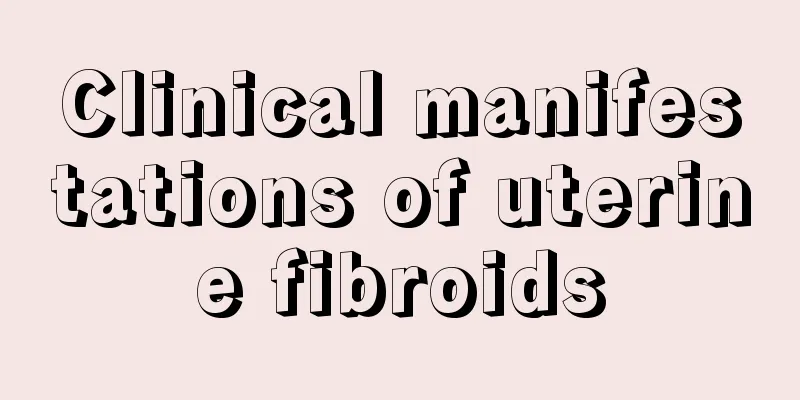Clinical manifestations of uterine fibroids

|
Every woman hopes to have a healthy body, especially married women who are always worried about having problems with their bodies. Why? Every woman who has been a mother will have this feeling: after giving birth, her body is not as good as before, with back pain, leg pain, gynecological inflammation, excessive vaginal discharge, cervical erosion, and irregular menstruation. These are things that worry every woman. The topic that worries female friends the most is uterine fibroids. This disease makes women turn pale and terrified. In fact, many women think that there is no cure for tumors. Without understanding the condition, they lose confidence in life, which is the most undesirable thing. Uterine fibroids are the most common benign tumors in the female reproductive organs. Symptoms are: Most patients are asymptomatic and are only occasionally discovered during pelvic examinations or ultrasound examinations. If there are symptoms, they are closely related to the location, speed, degeneration and complications of the tumor growth, but have relatively little to do with the size and number of the tumor. People with multiple subserosal fibroids may not have symptoms, but a small submucosal fibroid can often cause irregular vaginal bleeding or menorrhagia. Common clinical symptoms include: (1) Uterine bleeding is the most common symptom of uterine fibroids, occurring in more than half of patients. Among them, cyclical bleeding is the most common, which can manifest as increased menstrual volume, prolonged menstrual period or shortened cycle. (2) Abdominal mass and compression symptoms When the fibroids gradually grow and enlarge the uterus to more than the size of a 3-month pregnant uterus or become a large subserosal fibroid located at the fundus of the uterus, a mass can often be felt in the abdomen, which is more obvious in the morning when the bladder is full. (3) Pain: Uterine fibroids generally do not cause pain, but many patients may complain of a feeling of heaviness in the lower abdomen and pain in the waist and back. (4) Increased vaginal discharge (5) Infertility and miscarriage (6) Anemia. If women experience the above symptoms, please seek medical attention immediately and do not delay. Early detection and early treatment are recommended. Don't wait until the late stage to treat it, it will be too late and you will regret it. There are many such examples around us. Don’t always be afraid in your heart, but be vigilant and defeat the disease. This is the way to deal with it. |
<<: A complete list of dietary prescriptions for treating dermatomyositis in women
>>: How to treat moderate cervical erosion
Recommend
How long does it take to ovulate after abortion?
Nowadays, young men and women are becoming more a...
What are the causes of anovulation?
Menstruation is a physiological characteristic of...
What are the yoga joint exercises?
Nowadays, many women take different measures to s...
Psychological immunity
This is the 3784th article of Da Yi Xiao Hu The i...
National Disability Prevention Day | Protect your hearing and don’t let your life be muted
Hearing impairment is the fourth leading cause of...
What's wrong with white foreign matter in vulva itching?
As a woman, it is very common to have gynecologic...
Why can't red and white radishes be eaten together? The edible value of white radish
White radish is a common vegetable that can be ea...
What is it like to "let yourself go" on the hospital bed after surgery?
Audit expert: Yin Tielun Deputy Chief Physician, ...
Can we really eat unlimited amounts of sugar-substitute foods?
Author: Zhang Yu, researcher at Chinese Center fo...
How to do beauty spa
Many women put on makeup every day, but at the en...
How to maintain the uterus?
We all know that maintaining the uterus is very i...
How to reduce breast size
Many people become inferior because of their smal...
Dry throat during early pregnancy
Dry throat is caused by the current weather and c...
What does it mean when a woman dreams of killing a snake?
Whether in the East or the West, people like to s...









